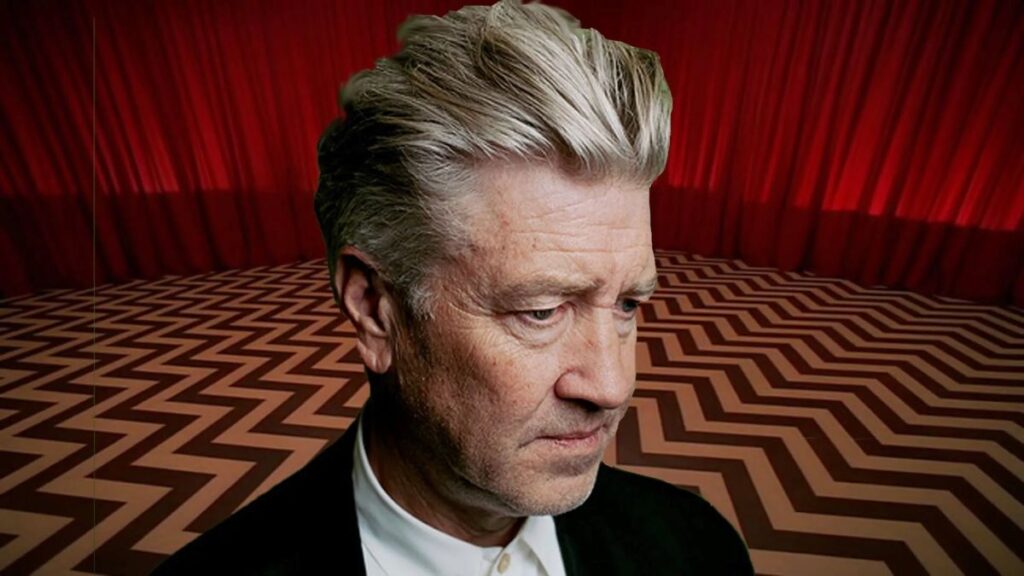David Lynch : Master of the Subconscious & Surreal Cinema : The recent passing of Rebekah Del Rio (June 27, 2025) – whose haunting a cappella performance of “Llorando” in Mulholland Drive‘s Club Silencio scene left audiences breathless – is a piercing reminder of David Lynch’s unparalleled ability to fuse sound, image, and raw emotion into transcendental art.
Del Rio’s voice became the soul of one of Lynch’s most iconic moments, a testament to his genius for curating collaborators who amplify his surreal visions (USA Today). As tributes pour in, we revisit the labyrinthine mind of David Lynch, a director who reshaped cinema by inviting us into the shadows of the subconscious.
The Lynchian Universe: Where Suburbia Meets the Sinister – David Lynch
David Lynch (b. 1946) doesn’t just make films; he engineers psychological experiences. His work—spanning films, TV, painting, and music—rejects linear narrative, favoring dream logic, fractured identities, and the grotesque lurking beneath mundane surfaces. From the industrial hellscape of Eraserhead (1977) to the neon-soaked dread of Blue Velvet (1986), Lynch crafts worlds where:
-
Duality reigns: Light/dark, innocence/corruption, reality/dreams.
-
Soundscapes haunt: Collaborations with composer Angelo Badalamenti define “Lynchian” sound – jazz-infused, melancholic, and deeply unsettling.
-
Small towns hide secrets: Twin Peaks’ “damn fine coffee” and cherry pie masked a world of supernatural evil.
Breakthroughs & Cultural Earthquakes – David Lynch
1. Eraserhead (1977): A DIY Nightmare
Shot over five years on a shoestring budget, this surreal black-and-white fever dream announced Lynch’s obsession with industrial decay and paternal anxiety. Its cult status cemented Lynch as Hollywood’s boldest outsider.
2. Twin Peaks (1990-1991; 2017): Rewriting Television
Agent Dale Cooper’s investigation into Laura Palmer’s murder became a global phenomenon. Lynch weaponized TV’s episodic format to explore small-town rot, Tibetan mysticism, and interdimensional entities. The 2017 revival The Return shattered expectations anew, proving Lynch’s timeless relevance .
3. Mulholland Drive (2001): A Masterpiece of Fragmented Identity
Ranked among the greatest films ever made, this neon-noir puzzle follows amnesiac Rita (Laura Harring) and starry-eyed Betty (Naomi Watts) through a Hollywood that’s equal parts dream factory and nightmare labyrinth. The Club Silencio sequence—where Rebekah Del Rio’s lip-synced Spanish rendition of “Crying” (“Llorando”) collapses reality—remains a zenith of Lynch’s artistry. Del Rio’s voice, echoing in a theater where “no hay banda” (there is no band), epitomizes Lynch’s theme: illusion vs. despair.
The David Lynch Toolkit: Techniques That Define a Genre
Lynch’s style isn’t just distinctive—it’s revolutionary:
-
Sound as Weapon: From the buzzing dread in Eraserhead to Julee Cruise’s ethereal Twin Peaks vocals, sound design is narrative.
-
Visual Symbolism: Red curtains, flickering lights, and creeping smoke signal liminal spaces.
-
Nonlinear Storytelling: Lost Highway (1997) and Inland Empire (2006) fragment time and identity, forcing audiences to feel rather than decode.
-
Absurdist Humor: A deadpan dwarf, a talking log lady—Lynch balances terror with the ridiculous.
Collaborators: The David Lynch Family
Lynch’s vision thrives on artistic symbiosis:
-
Angelo Badalamenti: Composer whose “Laura Palmer’s Theme” is instantly iconic.
-
Kyle MacLachlan: Lynch’s on-screen alter ego (Cooper in Twin Peaks, Jeffrey in Blue Velvet).
-
Laura Dern: A fearless muse in Blue Velvet, Wild at Heart, and Inland Empire.
-
Rebekah Del Rio: Her unadorned performance in Mulholland Drive exemplifies Lynch’s power to elevate raw humanity into myth.
David Lynch Legacy : The Lynchian Ripple Effect
Lynch’s influence permeates modern culture:
-
TV Revolution: Twin Peaks paved the way for complex serialized storytelling (The Sopranos, True Detective).
-
Aesthetic Movements: Fashion, photography, and music (think Lana Del Rey, Chromatics) echo his retro-surreal blend.
-
Artistic Fearlessness: Filmmakers like Ari Aster (Hereditary) and Yorgos Lanthimos (The Lobster) embrace his discomforting ambiguity.
Beyond Film: The Meditating Modernist – David Lynch
Lynch’s creativity extends far beyond cameras:
-
Transcendental Meditation (TM): A lifelong advocate, he founded the David Lynch Foundation to support mental wellness through TM.
-
Fine Art: His paintings—dark, textured, and abstract—mirror his cinematic obsessions.
-
Music: Albums like Crazy Clown Time (2011) fuse bluesy riffs with distorted vocals.
Why David Lynch Endures in 2025
In an era of algorithm-driven content, Lynch’s work feels more vital than ever. He rejects explanations, inviting audiences into collaborative interpretation. As Rebekah Del Rio’s recent passing reminds us, his art captures the ineffable—grief, longing, and the shadows in our souls—with unmatched potency.
Final Thoughts: Enter the Dream
David Lynch teaches us that cinema isn’t about answers; it’s about awakening to the mysteries within ourselves. From the whispering pines of Twin Peaks to the shattered dreams of Mulholland Drive, his work remains a beacon for those brave enough to explore the dark, the strange, and the sublimely beautiful. As Lynch himself would say: “Through the darkness of future past, the magician longs to see…”


